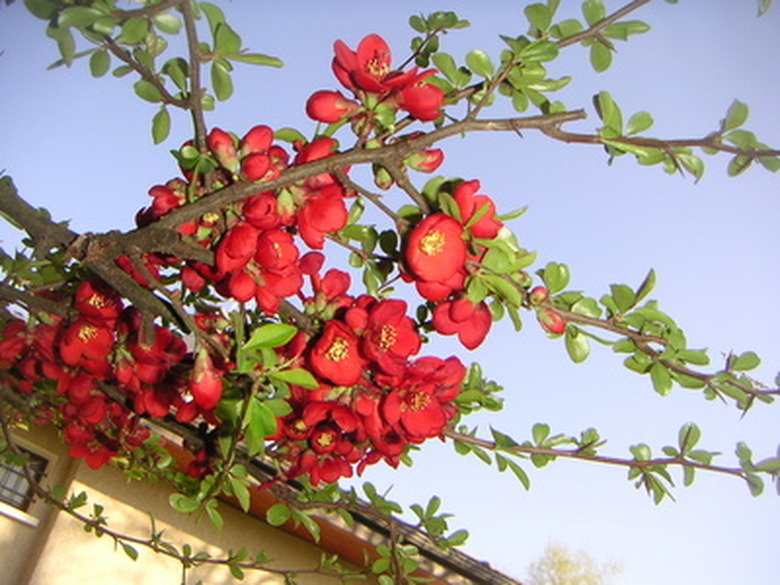Lifespan Of Flowering Crabapple Trees
Crabapple trees differ from standard apple trees in leaf color, growth habit, flowering time and fruit size. They are a small to medium size tree that you can use as a single planting or massed for a colorful display. They are often chosen as ornamental trees for their early spring flowering and abundant blooms. Flowering crabapple trees are well-adapted to many soil types and grow well in areas under drought conditions.
Genus
Crabapple trees are members of the plant family Malus, which developed from the rose millions of years ago . "The apple was the result of the cross-pollination of an ancient plum and a plant we call meadowsweet, in the genus Spiraea," according to the University of Maine. There are four species of crabapple native to North America among the one thousand known varieties. Crabapples are less than two inches in diameter; larger species are classified as standard apples.
- Crabapple trees differ from standard apple trees in leaf color, growth habit, flowering time and fruit size.
- Crabapples are less than two inches in diameter; larger species are classified as standard apples.
Propagation and Pruning
Crabapple varieties are frequently bud-grafted onto standard apple tree rootstock. Rootstock is chosen for tree height and strong growth habits. When suckers develop from rootstock you should remove them. Suckers that are not pruned may develop as an additional tree trunk but produce different color flowers and apples. Crabapple trees are pruned lightly in the first year to remove dead growth.
Site
Young crabapple trees need full sunlight but can tolerate very light shade if necessary. They develop less fruit and are susceptible to powdery mildew disease when too shaded. Crabapple trees are drought-resistant, needing only 15 to 20 inches of annual moisture. They thrive in mulched beds rather than turf-planted areas. When planted in grassy areas that are fertilized regularly crabapples often develop disease.
- Crabapple varieties are frequently bud-grafted onto standard apple tree rootstock.
- Crabapple trees are pruned lightly in the first year to remove dead growth.
Flower and Fruit
Crabapple trees bloom in April and May, depending on variety and local climate. Flowers may be single, semi-double or double. Single-flowering varieties bloom earlier than semi-double or double flowering varieties. Blooms remain on the tree for one to two weeks. Some varieties bud in one color and bloom in another. Fruit varies from ¼ to 2 inches in diameter and range from yellow to purple to brilliant red.
Lifespan
Crabapple trees have a lifespan of 30 to 70 years, depending on individual climate, care and disease conditions. Grafted onto standard apple rootstock they give abundant fruit for 30 years or more. Sparse foliage is an indication that the tree is in decline. Diseases that may limit crabapple tree life include fire blight, rust, powdery mildew and chlorosis. Tree borers also limit life span but are prevented with adequate but not excessive watering and good care.
- Crabapple trees bloom in April and May, depending on variety and local climate.
- Crabapple trees have a lifespan of 30 to 70 years, depending on individual climate, care and disease conditions.
